"An asteroid or a supervolcano could certainly destroy us, but we also face risks the dinosaurs never saw: An engineered virus, nuclear war, inadvertent creation of a micro black hole, or some as-yet-unknown technology could spell the end of us." -Elon Musk
We've covered a ton this week on Starts With A Bang, ranging from the earliest times to the ultra-theoretical to the present day and what's going on right here on Earth. Take a look back if you missed anything, as we've covered:
- Where is the cosmic microwave background? (for Ask Ethan),
- Raw ingredients, cubed (for our Weekend Diversion),
- Terrific tails, for a time (for Mostly Mute Monday),
- The missing piece (a fun contribution from Sabine Hossenfelder),
- What's causing Ceres' white spots?,
- The invisible mountains of Earth, and
- Are asteroids dangerous? (for Throwback Thursday).
In addition to these, I had a new piece over at Forbes:
You went absolutely wild over here, so it's tough to pick, but I'll do my best for your Comments of the Week!
From the always thought-provoking Michael Kelsey, who wants to know about the CMB's rising temperatures: "Ethan, in your post you write, “We actually have sufficient evidence that the CMB’s temperature was hotter in the past; as we look to higher and higher redshifts, we see exactly this effect.”
How do we see that? I don’t mean the plot you posted, but rather, how are the data points themselves acquired? Do you look for “blackbody shaped” spectra associated with the spectra of objects observed at various redshifts?"
So in theory, as we go farther and farther back in space, the CMB temperature should have been hotter. I contended there was evidence, and showed a graph. So what do you measure to make a plot like this?
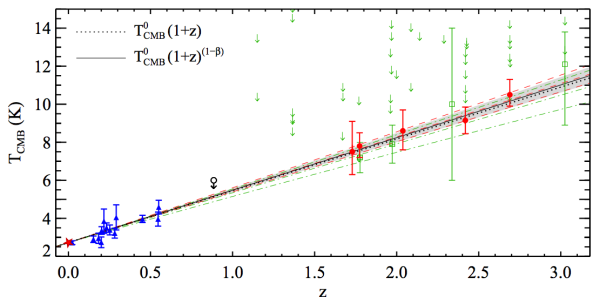 Image credit: P. Noterdaeme, P. Petitjean, R. Srianand, C. Ledoux and S. López, (2011). Astronomy & Astrophysics, 526, L7.
Image credit: P. Noterdaeme, P. Petitjean, R. Srianand, C. Ledoux and S. López, (2011). Astronomy & Astrophysics, 526, L7.
What you need to realize is that this incredibly low energy of the CMB photons is going to excite different molecules in different ways. The most sensitive -- with energies equivalent to only tens of micro-eV -- is perhaps the carbon monoxide (CO) molecule, which will enter different rotational states when excited by photons of certain frequencies.
If you want to see that, what you need is a background source of light -- a quasar, for instance -- that illuminates across the spectrum, and then you look for the signature of CO absorption at various energies.
These "cosmic thermometers" require the existence of heavy elements, so you can't do it in a pristine gas cloud, but the latest data I know of -- from Noterdaeme et al. (2011) -- constrains departures from the standard relation (that temperature is proportional to 1+z, where z is redshift) to be about 3%, all due to statistical error. Good stuff!
Image credit: Lernert & Sander, via http://lernertandsander.com/cubes/.
From Ragtag Media on my mystery food cube: "Is It A chioggia beet?
http://www.sunset.com/food-wine/healthy/healthy-energy-foods/chioggia-beets"
I am pretty sure we've got a winner here. Thanks!
From Denier on black hole information loss: "If there is no singularity, and all matter that falls in is just crunched down into being part of a super-dense tiny ball, is the event horizon irrelevant? If reversing the gravity of a black hole in the same way as hypothetically reversing the expansion of the universe, thereby causing everything that ever fell into a black hole to come exploding out enough to say information isn’t being lost?"
The crux of the problem is this: if you take a look at what we consider important information in the Universe, we're talking about things like conservation laws. In other words, things that can't be created or destroyed. Yes, there are the basic ones like energy, momentum, angular momentum and electric charge. Black holes do conserve those things: that information is encoded in the type of black hole we have, and hence in its outgoing, emitted radiation as it decays.
But what about other quantum numbers? What about things like baryon number, lepton number, lepton family number, color charge and more? If you made a black hole out of the collision of two neutron stars, would you really expect it to be identical to a black hole made out of the collision of two anti-neutron stars? I wouldn't because as far as we know, baryon number is an important piece of information, and yet if a black hole decayed, it wouldn't matter whether it was made from 10^57 baryons or 10^57 anti-baryons.
And that's the simplest way I know how to express the puzzle. I don't like it, and you shouldn't, either.
From Omega Centauri on Ceres' mysterious white spots: "What sort of albedo (fraction of light that is reflected) is required to explain the observations? Are these spots white as the driven snow, or grey looking like [brilliant] white because the surroundings are very dark? Any idea, how old the crater is? If it was recent, then it would be easy to imagine that some near surface water (brine?) melted and filled up the low spots."
There are a lot of things to consider when it comes to Ceres and its mysterious white spots. One is that albedo is very difficult to tell right now due to the tremendous contrast: the pixels that are coming back are all 100% saturated (confirmed by Emily Lakdawalla of the Planetary Society), so any "artificial enhancement" you see are enhancements of JPG artifacts, not of any actual information. The best estimate is that they have an albedo of around 40%, which is a stark contrast to Ceres' overall albedo of around 9%. There are big error bars on those numbers, mind you, on the order of a third the size of the signal.
You're also probably imagining this crater as having low points where the white spots are, but the images themselves -- as I've been able to pull them from the publicly available data -- tell a different story.
They appear to be coming down the side (possibly all sides) of a central peak in this crater. This is not uncommon, the same way you get a "peak" coming back up after you drop something into a flat pool of water. If it is a briny salt, my guess -- from the images I've seen -- is that this was some sort of sub-surface eruption, possibly of a sub-surface ocean.
What would one call this? I would guess an impact-induced geyser, and what we would be seeing in that case are the remnant salt deposits that have been lifted to the surface. NASA put together a little animation of this crater's interior, which I'll add (and blow up for you, to triple its normal dimensions) here.
Are they lowlands? Highlands? Deposits of salt/ice? It's really hard to tell from the limited data available. Fortunately, Dawn is presently spiraling downwards towards the surface of Ceres, getting closer and closer. It's already only at 60% of the altitude it was at when the May 4th (above) images were taken, so hang on to your hats. While the speculation will likely run rampant for some time, the smart thing to do at this point is entertain the possibilities, and wait for the data.
I am fully aware this is something we're all bad at. So until then, you know, feel free to speculate.
Image credit: © 2015 MotorTrend Magazine, via http://www.motortrend.com/roadtests/suvs/1110_mopar_underground_jeep_an….
From Brian Cox on the Earth's invisible mountains: "I’m 51 years old and I still remember the time in fifth grade when I was asked on a test whether gravity would be stronger at the top of a mountain or in the valley below. Naturally I chose the top of the mountain because of all the extra mass I assumed was beneath my feet. I never argued the point, but I always believed Mr. Chesla, my teacher, had erred. Now I know he was correct, but I can give myself point for good intuitiveness."
This is one of the frustrating things about science teachers, especially for people who remember what happens to them at young ages. There are often nuanced "levels" of answers to a question. Sure, if "higher elevation" means "farther away from Earth's center," you'd expect gravitation to be weaker. But if there's more mass exerting a force on you -- and it would need to be significantly more, since mass is linear but gravitation falls off as one over the distance squared -- you'd expect gravitation to be stronger.
 Image credit: ©2010-2015 jup3nep, via http://jup3nep.deviantart.com/art/Golden-peak-189860730.
Image credit: ©2010-2015 jup3nep, via http://jup3nep.deviantart.com/art/Golden-peak-189860730.
Your teacher was right, but that's a very advanced question for a test for fifth graders. You can take heart, Brian, knowing that if the mountain was made out of gold instead of rock, you would've been completely correct!
Image credit: The Day, via http://theday.co.uk/science/astronauts-warn-of-city-killer-asteroids.
And finally, from Dave Hirsch on asteroid impacts: "The author ignores the elephant in the room: you cannot compare the risk of an individual, or millions of individuals dying, to the risk that our species might perish. The effort we should be willing to expend for the latter is not simply the effort we might expend on one person’s survival, scaled up by the size of the population. The author is wrong to say that other risks (war, disease) pose the same kinds of species-killing risks. They do not. Some would survive war or disease, but no humans would survive the Cretaceous-Tertiary event.
A big bolide is the only real risk to our species, and we should rightly work to avoid it happening, no matter how small the risk."
I really did get a lot of comments like this (I mean, you can go read them), mostly from people justifying asteroid defense by the "risk assessment" viewpoint argument as follows:
- If we get hit by a civilization-killer asteroid, everything is gone. It's the biggest catastrophe ever, it's game over for all of humanity, it's a hundred million year setback for evolution, and it's literally the worst-case scenario.
- Therefore, if there's even a finite probability of it happening, finite probability multiplied by infinite value consequence equals infinite importance, and therefore we should stop it.
But I would dispute both of those charges.
First off, this isn't an "infinite value" event. It's catastrophic, but it would only take away -- if you value human life and the human enterprise -- all the human life currently in existence and that would have existed into the future, and all we/they did. The value of the lives of humans that existed up until this point is finite, although I wouldn't know how to quantify it, and the value of all that's to come is finite as well. And like it or not, it is all going to end someday, for every living thing in the Universe.
And second, to say "finite probability" is really missing perhaps the most important point.
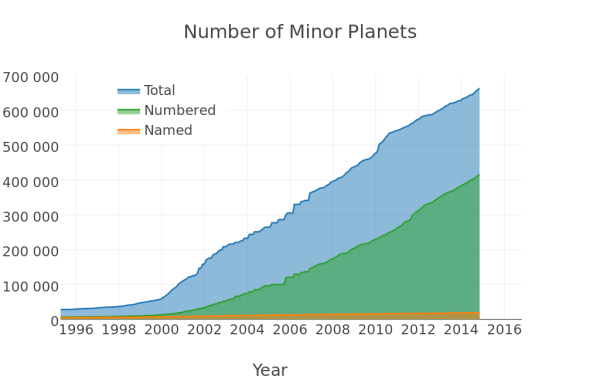 Image credit: Wikimedia Commons users Borvan53 and Yinweichen, with data from the IAU Minor Planet Center.
Image credit: Wikimedia Commons users Borvan53 and Yinweichen, with data from the IAU Minor Planet Center.
There are hundreds of thousands of known minor planets, including -- as far as we know -- all the potential Earth-killing asteroids. (Although there may be Kuiper belt or Oort cloud objects that could do us in still undiscovered.) The likelihood that any of the known, potentially Earth-killing objects will hit us in the next 100 years is zero, which is greater than the timescale it would take to develop technology to deflect such an encounter.
I'm not saying we shouldn't invest resources in tracking these objects, we should!
I'm not saying we shouldn't develop our technology to visit and understand them better, we should!
I'm not saying we shouldn't recognize the inherent uncertainty and whimsy of the cosmos of a chance event wiping us out, as the probability is not zero!
 Image credit: iShareimage, via http://ishareimage.com/human-diseases.asp.
Image credit: iShareimage, via http://ishareimage.com/human-diseases.asp.
But I am saying that we shouldn't fear humanity being wiped out by an asteroid when there are other, real, pressing problems that threaten our existence and prosperity as a species on, let's say, hundred-to-thousand-year timescales. The things we should be more concerned with -- from a practical point of view -- are disease, famine, and environmental catastrophes. If you insist on fearing a natural disaster, fear a supervolcano instead, and think about mitigation plans, as we get no advance warning for those.
But asteroids? The realistic "risk" of doing nothing is a city-killer at worst, and even that's only something that's likely to hit a city on hundred-thousand to million year timescales. Be realistic about it; I want more investment in science and technology as much as anyone, but not out of fear. I just can't bring myself to live that way.
Thanks for a great week, everyone, and I'll see you back here tomorrow for more wonders and joys of the Universe!
- Log in to post comments

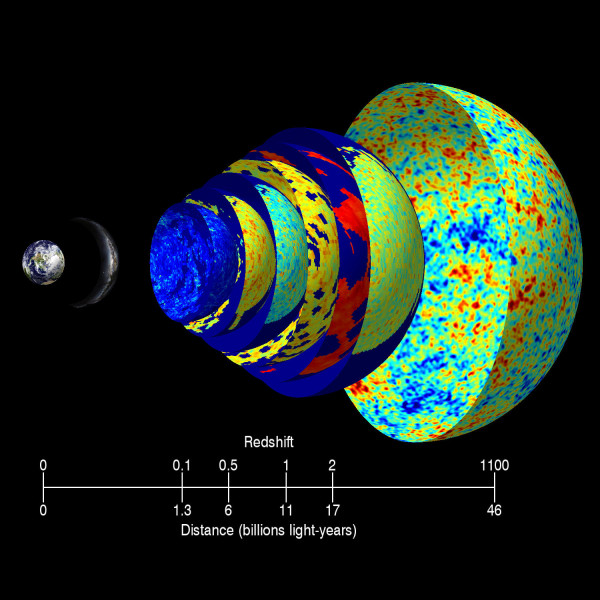
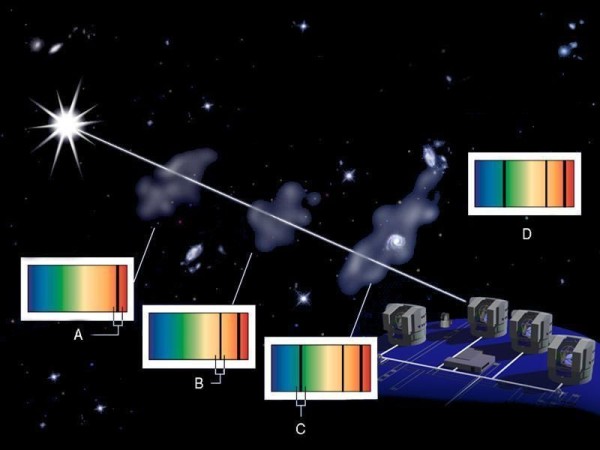
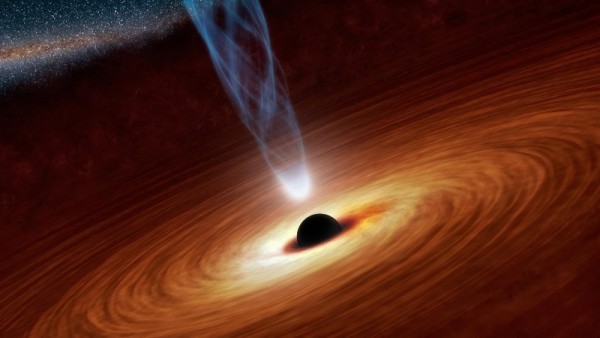
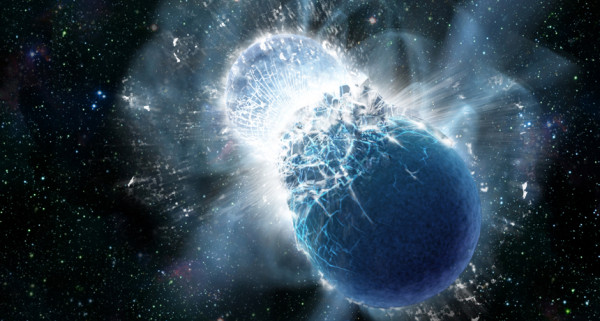
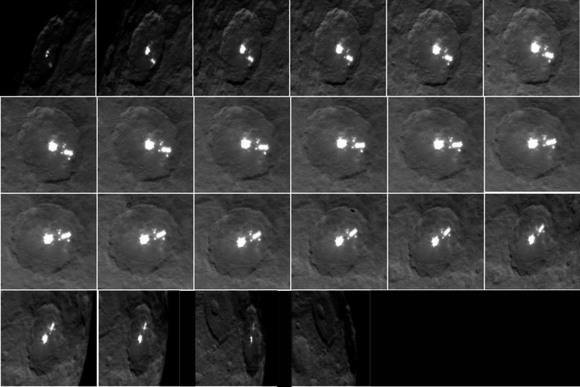
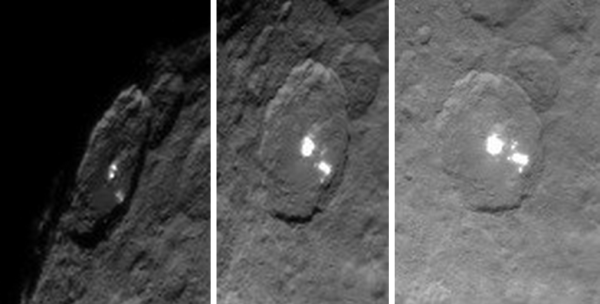
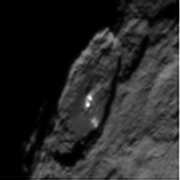
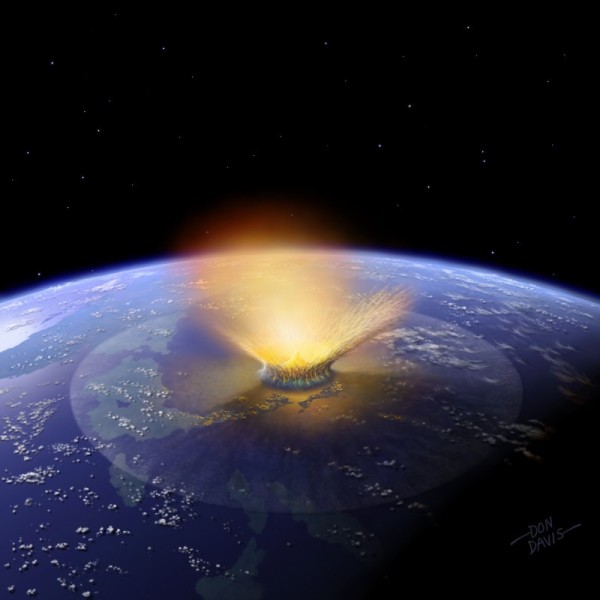
@Ethan
Thank you for trying to explain the black hole information destruction problem. I was really trying to avoid the radiating away of black holes via Hawking Radiation. While I get how it is supposed to work, Hawking Radiation doesn't make sense to me but that is a topic for another day.
Mostly I see the alleged information destruction as analogous to Einstein telling Schrödinger his cat isn't a probability, but has in fact been completely destroyed. Never mind that you can pick up the box to feel it still weighs the same as a box containing a cat, because fur color, breed, and tail length were all removed from the universe by closing the lid.
As you point out, black holes are demonstrably retaining at least some information about their contents. It just seems like they'd retain everything and we'd see that if we lifted the schwarzschild radius lid.
@Ethan
After taking a few more hour to let sink in what you were saying, I'm thinking there is no way Hawking Radiation is really a thing. While this is in no way the primary reason for my thinking, if evaporating a black hole via Hawking Radiation destroys information when information must be preserved then Hawking Radiation isn't real.
@Denier #2: I think you've actually reached the crux of the matter. There are three things which we are pretty confident are true:
1) In general relativity, black holes are always surrounded by an event horizon, which represents an insurmountable separation between the spacetime within and the (asymptotically flat) spacetime outside. No feature of the black hole's origin or constitution, other than mass, spin and electric charge, can be visible outside the event horizon.
2) Quantum states evolve unitarily. Whether they're superpositions, or entangled, or "collapsed" (projected onto an eigenstate), they evolve with an integral probability of 1.
3) Sufficient energy density results in pair production of any particles with masses below the energy in a local region. This is how particle colliders work, for example.
Items 3+1 are what lead, via fairly straightforward math, to Hawking radiation. If you are comfortable with the Dirac equation, you can probably derive it for yourself.
Hawking radiation in turn, because some of the energy associated with the black hole's mass escapes to infinity, implies that black holes lose mass over time.
The problem is, as you yourself have noted, is that the logical conclusion of black hole evaporation, implies that the internal (necessarily quantum) states which contributed to the black hole eventually disappear, which violates (2).
This contradiction suggests that _something_ in 1, 2 or 3 are false. But we don't know which. And that is a highly active area of research, with many possible avenues of approach.
@Michael Kelsey #3
1) There are 3 things I really don't like about Hawking Radiation, but possibly the biggest is that I don't believe virtual particles have momentum. Photons have no rest mass. Virtual Photons have no rest mass AND no momentum. They are 0=0mc^2. A Virtual Photon is nothing but a communication channel intrinsic to space that conveys electromagnetic state. It isn't a thing. It is just a property of space. There is nothing for gravity to latch on to, nothing that can be tidally separated, and nothing that can fall into a black hole.
2) Even if you could spontaneously create real bits of mass by energizing communication channels in space and getting those values to persist longer than Planck Time through some allowed trick in QM math, the energy can't leave the system. Anything created at the Schwarzschild radius going any direction other than perfectly perpendicular to the radius and at the speed of light will fall into the black hole. For the perfect particles, they speed away from the radius at 0 mph forever and do nothing to reduce the reduce the energy or gravity of the system by even the weight of a single photon.
3) Black holes have been indirectly observed and black holes appear to be retaining at least some information as we are able to indirectly see black holes of different masses. If every other part of the universe dictates that information must be preserved but singularities and Hawking Radiation destroy information then both have to go.
"No feature of the black hole’s origin or constitution, other than mass, spin and electric charge, can be visible outside the event horizon."
Remember, the event horizon changes slightly in size as you move from infinity to nearer the black hole.
You don't have to.
Nobody, least of all Stephen Hawking but none of us either, have to care about what you do or don't like.
Then your problem is, yet again, and this is becoming tiresomely consistent, is 100% your problem because you *believe* something is true.
That's a load of bullshit.
Science, reality, doesn't give a fig what you believe in.
You're wrong.
Your belief that virtual particles do not carry momentum is the cause of your problem with Hawking Radiation. Stop believing in it and your problem with it will go away.
Stop believing.
As to Ceres ' albedo, bear in mind that while 9% light return may sound pretty dark , it is almost 50 % brighter than Earth's oceans. - absent wind mixing air bubbles ito form whitecaps, , any resnably deep body of water is dark as an asphalt parking lot.
Really? Russ? Because the oceans absorb throughout its depth, which is quite considerably deeper than asphalt.
I've looked at asphalt road and it's not all that black. It's pretty damn shiny.
So I'd like some evidence of your claim there.
I mean, if it turns out you mean "Asphalt albedo 6%, water 6.5%", then there's not really anything to get your panties bunched over. It also indicates some deliberate smearing on your part, since the inference being tried here is obviously "This is so wrong, it's not even funny".
I don't know that's the case.
@Denier #4: You seem to have an awful lot of misconceptions, which contribute to your confusion and misunderstanding of the physics we're trying to discuss.
1) Virtual photons are not virtual pair production. Virtual photons are one way to describe the field of a static electric charge. Black holes are allowed (under the math of GR) to have a charge, and therefore they _do_ have virtual photons around them (if you want to describe the field that way).
That has nothing whatsoever to do with pair production and Hawking radiation. Pair production involves the creation of (usually) electron-positron pairs from the high (gravitational) energy density in the region near the event horizon. These are *real* particles, not virtual. Please go read some sufficiently accurate technical articles on the subject, so that you can express a more informed opinion.
2) This is pretty much word salad, with no coherence or relevance to the topic at hand. The old expression "not even wrong" applies here.
3) Please go back and read what I said. Black holes in GR can have exactly three properties visible outside the event horizon. One of those properties (duh) is their mass. What you *CANNOT KNOW* is exactly what kinds of objects contributed to that mass. Throwing 100 kg of feathers into a black hole will produce EXACTLY the same mass increase as throwing 100 kg of plutonium. NO DIFFERENCE. NO WAY TO TELL WHAT GOT THROWN IN. That is what is meant by "lost information." Please go read a sufficiently technical article on the subject in order to contribute an informed opinion to the discussion.
@Michael Kelsey #9
My understanding of Hawking Radiation as reflected in a sufficiently technical article on the subject is the energy emission stems from the result of virtual particles being “boosted” by the black hole’s gravitation into becoming real particles.
Straight from the above linked paper: "A slightly more
precise, but still much simplified, view of the process
is that vacuum fluctuations cause a particle-antiparticle
pair to appear close to the event horizon of a black hole.
One of the pair falls into the black hole whilst the other
escapes. In order to preserve total energy, the particle
that fell into the black hole must have had a negative
energy"
Item 1 through 3 in post #3 of this thread as authored by you all seem solid, but there is a paradox which means something isn't correct. If something has to break then I am thinking it is that Hawking Radiation depends on a misapplication of Quantum Gravity.
The creation of real particles in Hawking Radiation depends on the tidal separation of virtual particle-antiparticle pairs. I don't think virtual particles are affected by gravity. If they were, we wouldn't know if electric charge were being preserved because the electromagnetic force carrier could only communicate that information in the direction of the singularity.
If Quantum Gravity cannot tidally separate virtual particle-antiparticle pairs then there is no Hawking Radiation, no loss of information, and no paradox. From where I stand, if you figure out Quantum Gravity, you solve the Black Hole Information Paradox.
"One of the pair falls into the black hole whilst the other
escapes. "
And in doing so, both gain enough energy to become real, otherwise they would remain a bound virtual pair. They become real and nonvirtual in the even that separates them.
Half assed misunderstanding.
Try better next time.
"I don’t think virtual particles are affected by gravity."
Go find out by investigation instead of looking into your navel and guessing.
Good thoughts and input Denier, keep reaching, trying, seeking.
Right, wrong or indifferent, at least you are contributing to the cause of learning.
@Denier #11: Good reference! I think that how different physicists describe the process depends on how they approach the equations. I used a model which is analogous to how we produce particles in colliders -- stealing some of the gravitation energy to turn into an e+/e- (or whatever) pair, thereby reducing the gravitation energy (a.k.a. mass). The authors you cite start from a virtual pair, and assign positive energy to the one which escapes and negative energy (which will also reduce the total energy/mass) to the one which doesn't escape. I think (but I have NOT derived) that both approaches end up with the same final statistical result.
Anything with mass or energy, real, virtual or otherwise, is affected by gravity in GR. Period. You can believe whatever you like, but if you don't want to work within the context of the science you're discussing, your comments won't be particularly useful.
You wrote, "Item 1 through 3 in post #3 of this thread as authored by you all seem solid, but there is a paradox which means something isn’t correct." Yes! Exactly so. This is the crux of the problem, which is usually written in shorthand as the "information paradox." Some authors have tried eliminating the singularity (so that the BH would still have internal structure), others have tried modifying how Hawking radiation happens (avoiding the entangled pairs), and so on.
All of them, professional physicists, formulate the problem, and their exploration of solutions, in the context of the physics at hand.
@Michael Kelsey #14
I totally get that anything with mass or energy is affected by gravity in GR, but with pair production we aren't working in GR. This is pure QM coming straight out of the Heisenberg Uncertainty Principle.
If virtual particles popping in and out of quantum foam were gravitationally active then the entire universe would immediately collapse in on itself. Empty space would more dense than the core of a neutron star 46 billion light years across. That we are all still here is pretty good evidence that virtual particles popping out of quantum foam are not gravitationally active.
If virtual particles are not gravitationally active, then pairs can't be tidally separated which is supposed to be the entire mechanism that creates Hawking Radiation.
"Right, wrong or indifferent, at least you are contributing to the cause of learning."
Bollocks
How does that work?
"I don't believe it's that way"
"I don't believe it's that way"
"I don't believe it's that way"
"I don't believe it's that way"
"I don't believe it's that way"
"I don't believe it's that way"
"I don't believe it's that way"
is all Denier has.
"I totally get that anything with mass or energy is affected by gravity in GR, but with pair production we aren’t working in GR"
We're also not excluding it.dipshit.
Hate..Hate..Hate..Hate. Hate..Hate...
Is all Wow has
I guess the science is settled, a hater is gona hate.
Why all the hate, rag?
Sorry, didn't read any more than that.
@Wow #17
Actually, yes GR is excluded here. Virtual particle pairs annihilate before they can be considered real by GR and the laws of thermodynamics.
It's not excluded here. Virtual particle pairs annihilating themselves before gravity can "spot" them doesn't mean that when disassociated they aren't then able to be spotted by gravity.
It doesn't mean that gravity CAN'T spot them. Only that it doesn't exist long enough to tell that it has. Nothing says gravity can't affect them. Only that any affect they have doesn't have sufficient time to violate the uncertainty principle before they disassociate.
So they can totally have different gravitational potential energy. Gravity can pull them apart but it releases energy to the value that maintains the conservation of energy in doing so.
IOW the black hole loses mass energy, one partner gains reality.
Your problem here is absolutism.
You've heard that virtual particles don't exist long enough to have any measured rest mass. Then project that as absolutely true.
If you read up on physics enough to wonder, you'd best keep reading to find out why your complaints are already answered.
If you ask here, then when you're told you're wrong, either accept it or don't. But if you're not going to accept an explanation, then don't bother asking for explanations.
If you can go "That doesn't happen", then you have no case against me saying "You're wrong". Both are equally evidenced. If you want me to prove you wrong, you need to supply proof you're right.
If virtual photons have no momentum, then how does one account for the Casimir Effect?
@bradh #23
This is a fantastic question and one that should be addressed by someone other than me, but I'm going to jump on it and maybe I'll make such a mess of the answer that other more knowledgeable people will chime in.
The first thing you need to understand is that virtual photons are not particles or waves moving through space. They are not photons-like at all. The name is really misleading and confusing. Virtual particles are just conceptual devices for visualizing subatomic communication. A virtual photon is the communication (or pathway of communication depending on how you want to look at it) of electromagnetic state.
Virtual photons do not travel here and there like regular photons do. While real photons have to zip around at the speed of light, virtual photons are standing fields. You can derive the momentum of a real photon by measuring its energy. Real photons are "on mass-shell" or "on shell" particles and their momentum always equals their energy. Virtual photons are "off mass-shell" or "off shell" particles and can have energy without momentum.
That is where the answer to your Casimir Effect question comes in. I'm sure you know there is an energy disparity on the different sides of the plates, and it is the "off mass-shell" nature of virtual photons that lets there be an energy differential without any momentum of virtual photons being involved.
That being said, there are those who are looking in to "Casimir Momentum".
"If virtual photons have no momentum, then how does one account for the Casimir Effect?"
They do have momentum.
"This is a fantastic question "
No it isn't.
It's only a fantastic example of someone who gets the science wrong, then wonders why science is wrong.
It isn't. They (and you) are wrong. Not the science.
bradh, next time you want to ask a "If... is so, then what..." question, think "If ... is NOT so, then what?".
"If virtual photons DO have momentum, then your query about the Casmir effect is moot".
What if you got rid of your television and started using your brain? The big bang isn't an actual theory. I recommend people investigate NASA, because some of their fraud is pretty ridiculous. The Hubble Space Telescope doesn't exist in orbit, and all of this had to be made up, because it is part of the evolution agenda. Evolution isn't an actual theory either.
Look up the bubbles in the water tanks that you can see in some of NASA's "space walks". They are all faked underwater, and this is how you know the Hubble Space Telescope doesn't exist in real life. Because they performed these same bullshit space walks on a model of the telescope underwater, which were supposed to be required. The images you are shown of the universe are nonsense. NASA will claim that they have found life in the universe in the future, it is already planned out and maybe 7-15 years away. It will be bullshit! Learn about Freemasons, and learn of the Jesuit order. Powerful people seek to be the sovereign over all "sovereign" nations, and that's why the world governments are corrupt and lying to their own people. Leaders are installed, and you have the illusion of choice. The Jesuit order has been infiltrating, and deceiving the world for hundreds of years now. You have no country, and you are allowed to think you have rights, until the days where humanity is finally enslaved.
No, the Big Bang is a theory. You seem unknowingly confused on this point.
It is a theory.
Hope that helps.
paleophotons
english word - noun
etymology: paleo- + photon (words derived from Ancient Greek: paleos + phos + -ios)
definition: The cosmic microwave background or CMB, the oldest photons able to travel freely in the Universe after "recombination".
# Paleophotons are omnidirectional relics of the "recombination era".
# Via triangulation of the patterns of paleophotons, we now know the Universe is probabilistically infinite. It means it is infinite, but if one travels beyond some virtual sphere, the probability of him /her returning to the initial region of his journey, approaches zero, because far away objects become probabilistic, thus an infinite variation could now exist, and after some distance it is certain that his/her home, is no longer an actual option for him/her.
@Leo Sapolsky #30: [citation needed]
"# Via triangulation of the patterns of paleophotons, we now know the Universe is probabilistically infinite"
Wordsalad garbage.
The rest of it isn't any improvement.